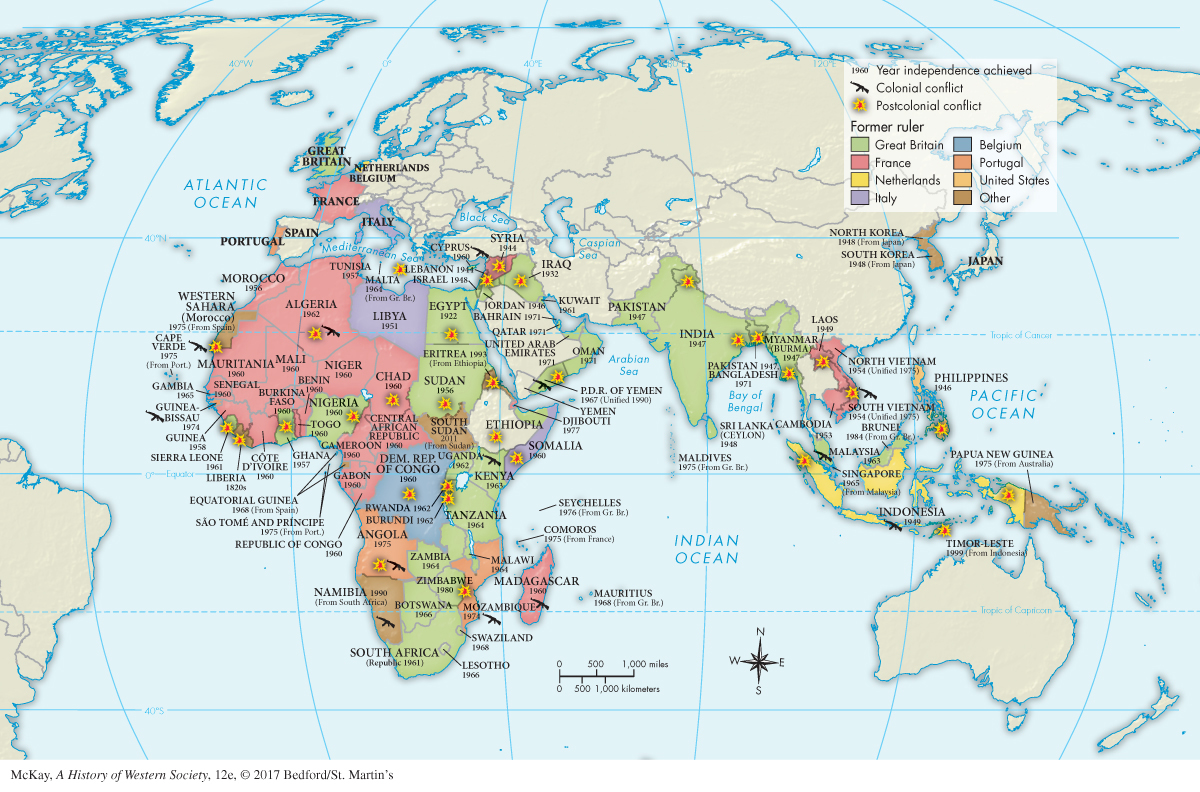A History of Western Society: Printed Page 963
A History of Western Society, Value Edition: Printed Page 925
A History of Western Society, Concise Edition: Printed Page 966
The End of Empires FOCUS QUESTION What led to decolonization after World War II, and how did the Cold War influence the process?
In the postwar era, in one of world history’s great turning points, Europe’s long-

The Cold War had a profound impact on decolonization. Independence movements often had to choose sides in the struggle between the superpowers. After independence was won, both the United States and the Soviet Union struggled to exert influence in the former colonies, and economic growth and political stability remained elusive in much of Europe’s former empire. Liberation from colonial domination was a proud achievement that brought fundamental gains in human freedom but left lasting problems for the former colonized and colonizers alike.